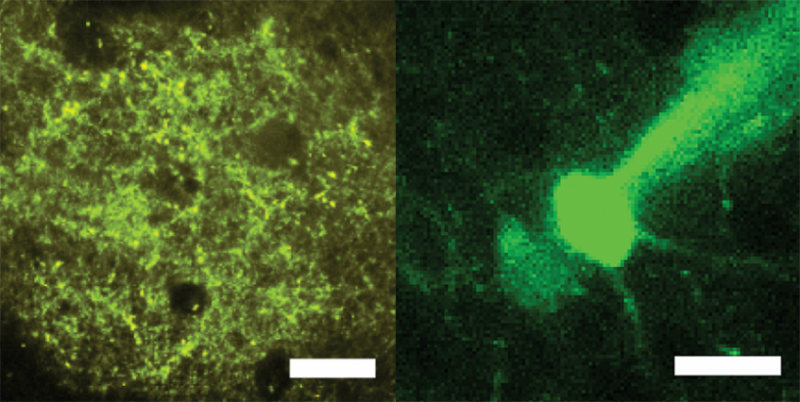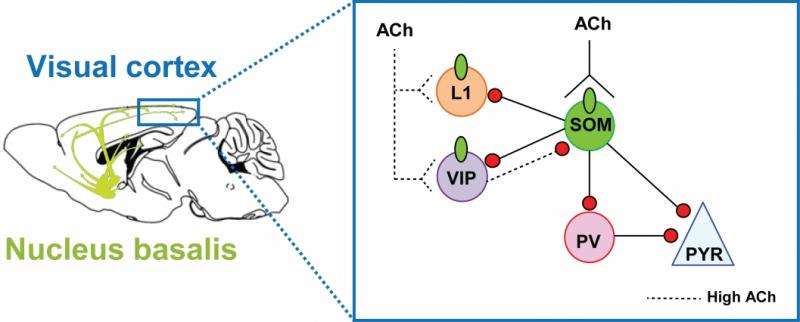Researchers ID brain mechanisms underlying alertness and attentiveness

Researchers at MIT's Picower Institute for Learning and Memory have shown for the first time that a common neurotransmitter acts via a single type of neuron to enable the brain to process information more effectively. The study appears in the April 27 advance online edition of Nature Neuroscience.
A fundamental feature of the awake, alert brain is the release of the neurotransmitter acetylcholine (ACh). By zeroing in on a specific cortical circuit driven by a single cell type, "this paper shows that a crucial function of ACh is to enhance information representation by acting principally on one class of inhibitory neuron in the cortex," says co-author Mriganka Sur, the Newton Professor of Neuroscience and director of the MIT Simons Center for the Social Brain. "We have pinpointed the mechanism underlying a fundamental aspect of information representation in the brain."
There are many scenarios in which being in sync is a good thing. The attentive brain, surprisingly, is not one of them.
Decorrelation—neurons firing in an unsynchronized manner—can enhance and even optimize information processing. In fact, conditions such as Parkinson's disease and epilepsy are characterized by pathologically synchronized neurons.
The Picower study pinpoints, for the first time, a specific subtype of inhibitory neuron that contributes to decorrelation in a major brain circuit tied to attention and arousal.
The mechanisms underlying ACh-modulated brain functions are complex due to the sheer number of types of brain cells that ACh modulates, says former MIT graduate student Naiyan Chen, co-author of the paper. "Surprisingly, we found a single cell type is responsible for ACh-based information representation in the brain."

This study, intended to shed light on brain function at the circuit level, is "the first to demonstrate a crucial emerging principle of cortical circuits: that the diffuse release of ACh within the cortex, previously thought to contribute to nonspecific actions, actually leads to highly specific functions," Sur explains. "Certain cells have receptors that are finely tuned to such transmitters, and these cells are in turn part of specific circuits.
"This enables neurotransmitter systems and cortical circuits to create very specific response transformations that underlie cognitive functions such as attention and brain states that accompany alertness and arousal," he says.
Naiyan and research scientist Hiroki Sugihara demonstrated these circuits and their function in genetically modified mice by recording the actions of specific neurons and activating and inactivating different neuron classes to deconstruct their roles.
Chen anticipates that these findings will motivate future research in other brain functions—such as learning and plasticity—modulated by the neurotransmitter acetylcholine. "An interesting next question is: Do different acetylcholine-modulated cell types mediate different brain functions?" she says.
More information: "An acetylcholine-activated microcircuit drives temporal dynamics of cortical activity" Nature Neuroscience (2015) DOI: 10.1038/nn.4002
This story is republished courtesy of MIT News (web.mit.edu/newsoffice/), a popular site that covers news about MIT research, innovation and teaching.















